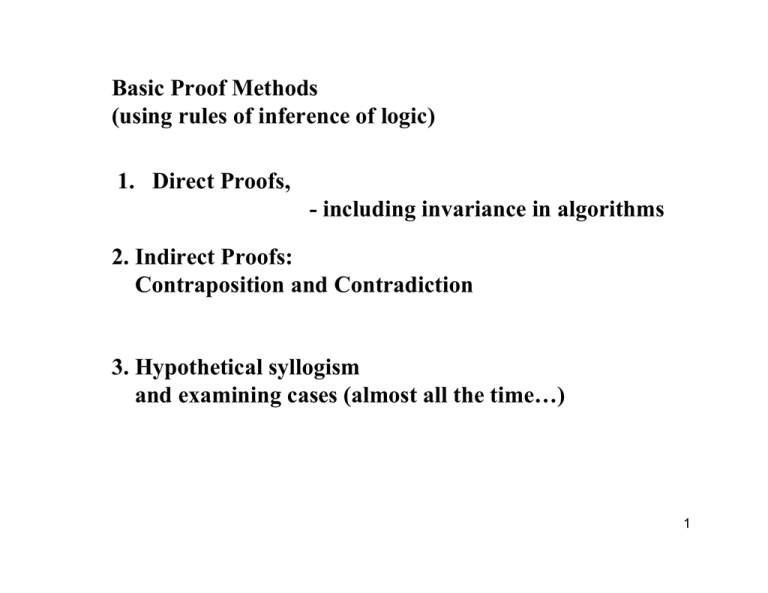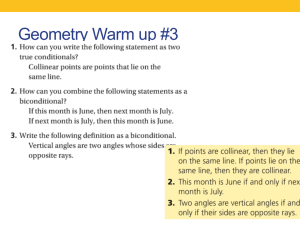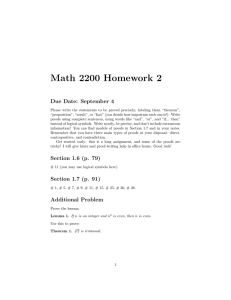Basic Proof Methods (using rules of inference of logic) 1. Direct Proofs,
advertisement

Basic Proof Methods (using rules of inference of logic) 1. Direct Proofs, - including invariance in algorithms 2. Indirect Proofs: Contraposition and Contradiction 3. Hypothetical syllogism and examining cases (almost all the time…) 1 1. Direct Proofs (logical foundation: Modus Ponens) in practice, reduce to an obvious more general principle Essentially , reduce to more general principle. Sometimes identifying the more general principle is straightforward. Sometimes identifying the more general principle is trickier, and we will review “strategies” for doing so. 2 1. Direct Proofs (continued) in practice, reduce to an obvious more general principle Example: Prove that, for all real numbers x, The more general principle is obvious: The sum of non-negative quantities is always a non-negative quantity. So we have to express as the sum of non-negative quantities: 3 1. Direct Proofs (continued) in practice, reduce to an obvious more general principle Example: The nxm“chocolate bar” problem: Any algorithm takes exactly nxm-1 moves. The more general principle is less obvious, but once you see it, it is a one line argument: Algorithm INVARIANT: Any step of any algorithm increases the number of pieces by exactly one. It is now trivial to complete the proof: We start with 1 piece, we end-up with nxm pieces, which implies that nxm-1 moves are sufficient and necessary. 4 1. Direct Proofs (continued) in practice, reduce to an obvious more general principle. Example: Tiling the 8x8 board with 2x1 tiles. Claim: Tiling the 8x8 board with 2x1 tiles is not possible, if two squares at opposite corners are removed. The more general principle is less obvious, but once you see it, it is again a one line argument. 5 To identify such more general principles, one has to look more at the structure of the problem: 11 12 13 21 6 To identify such more general principles, one has to look more at the structure of the problem: 1+1 1+2 1+3 2+1 7 E O O E E 8 Now the general principle is obvious: INVARIANT: Each 2x1 tile, no matter how it is placed, reduces the number of uncovered squares by 2: one black and one white. We start with 30 white squares and 32 black squares. Any tiling effort will end up with 2 untiled black squares, which are impossible to cover with a 2x1 tile. 9 2. Proofs by Contrapositive Example: Proof: We will equivalently prove the contrapositive: Now this is obvious: 10 3. Proofs by Contradiction Example: Proof: Suppose, for the purposes of contradiction, that contradicting 11



